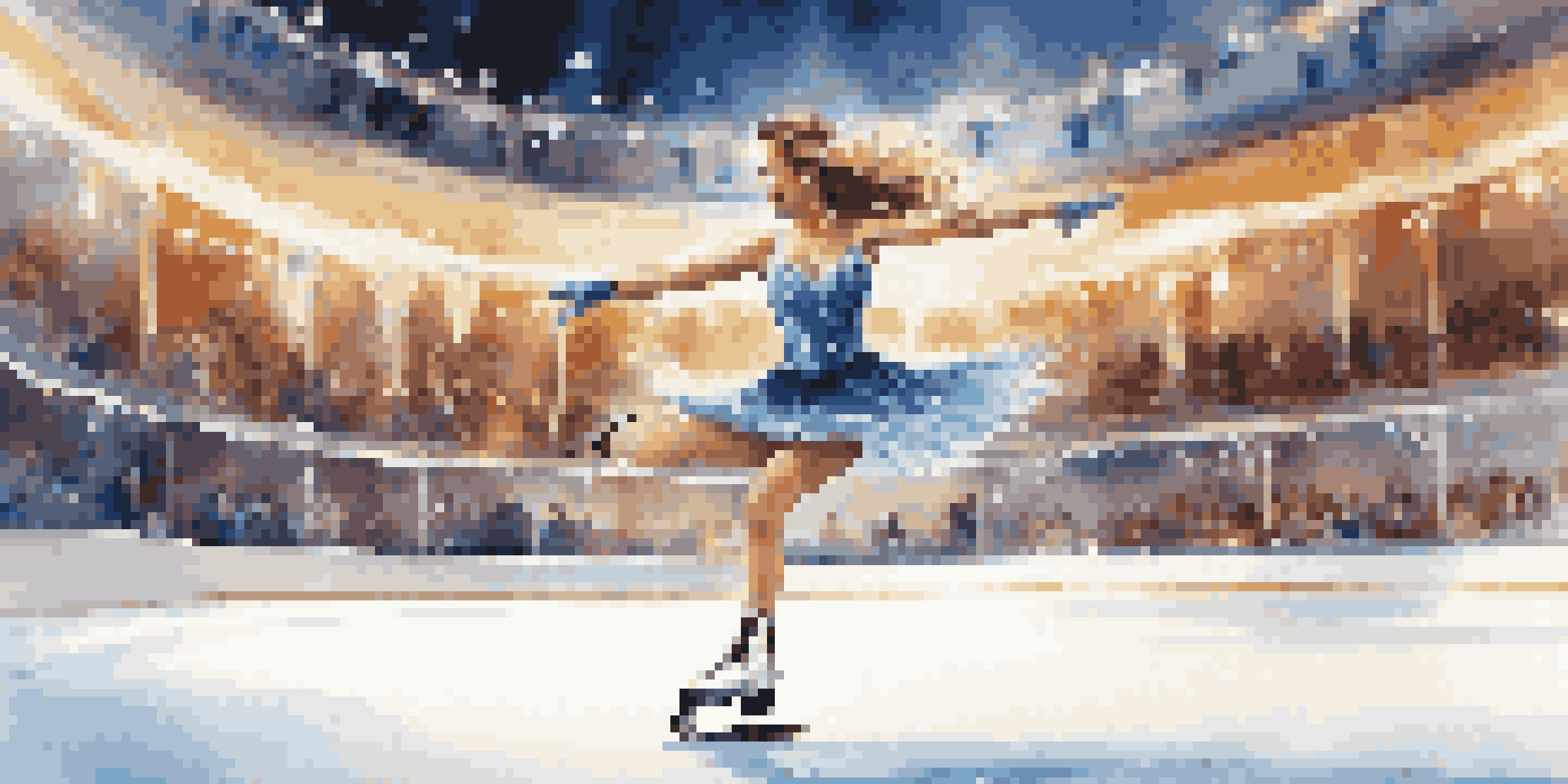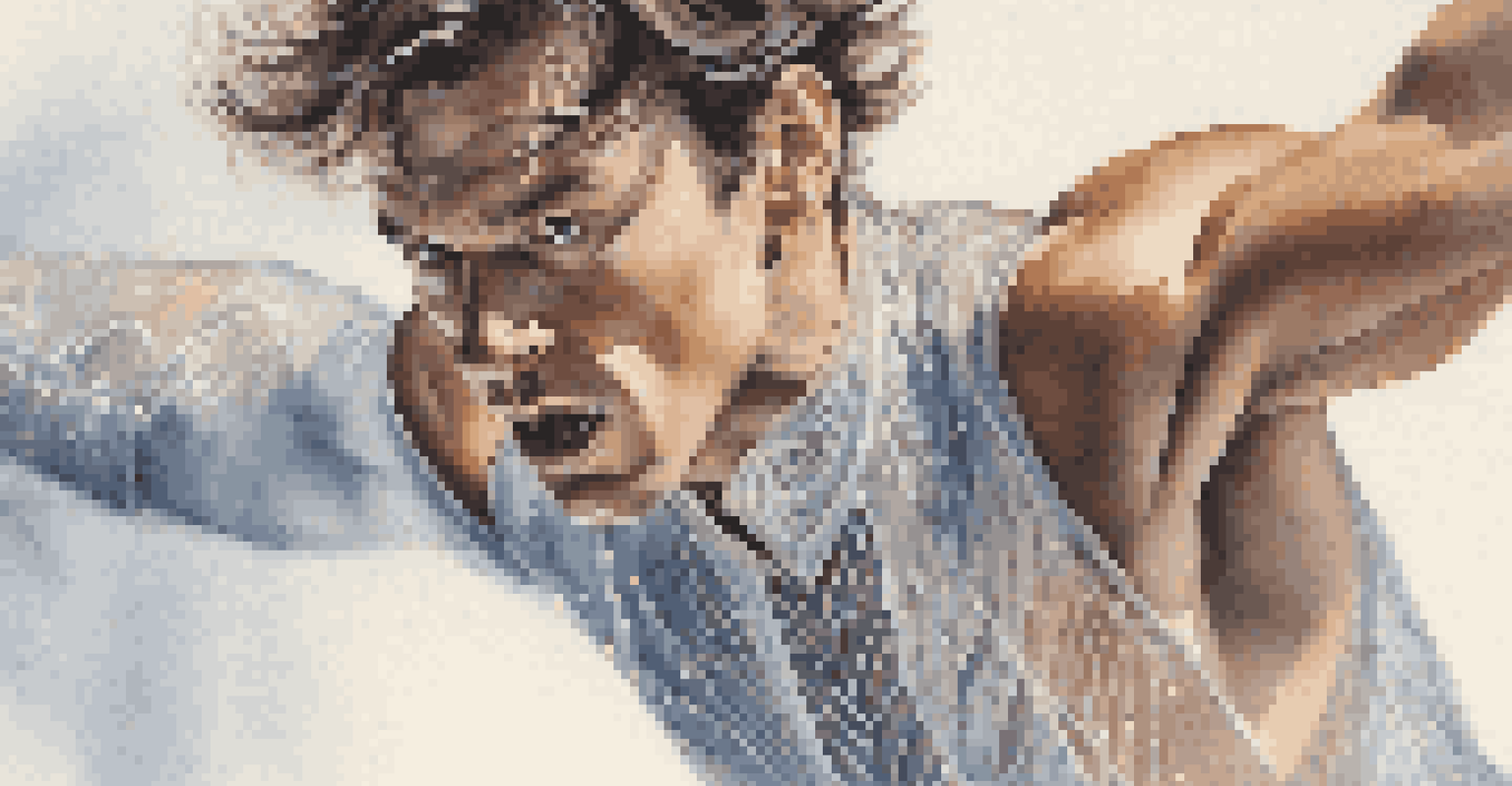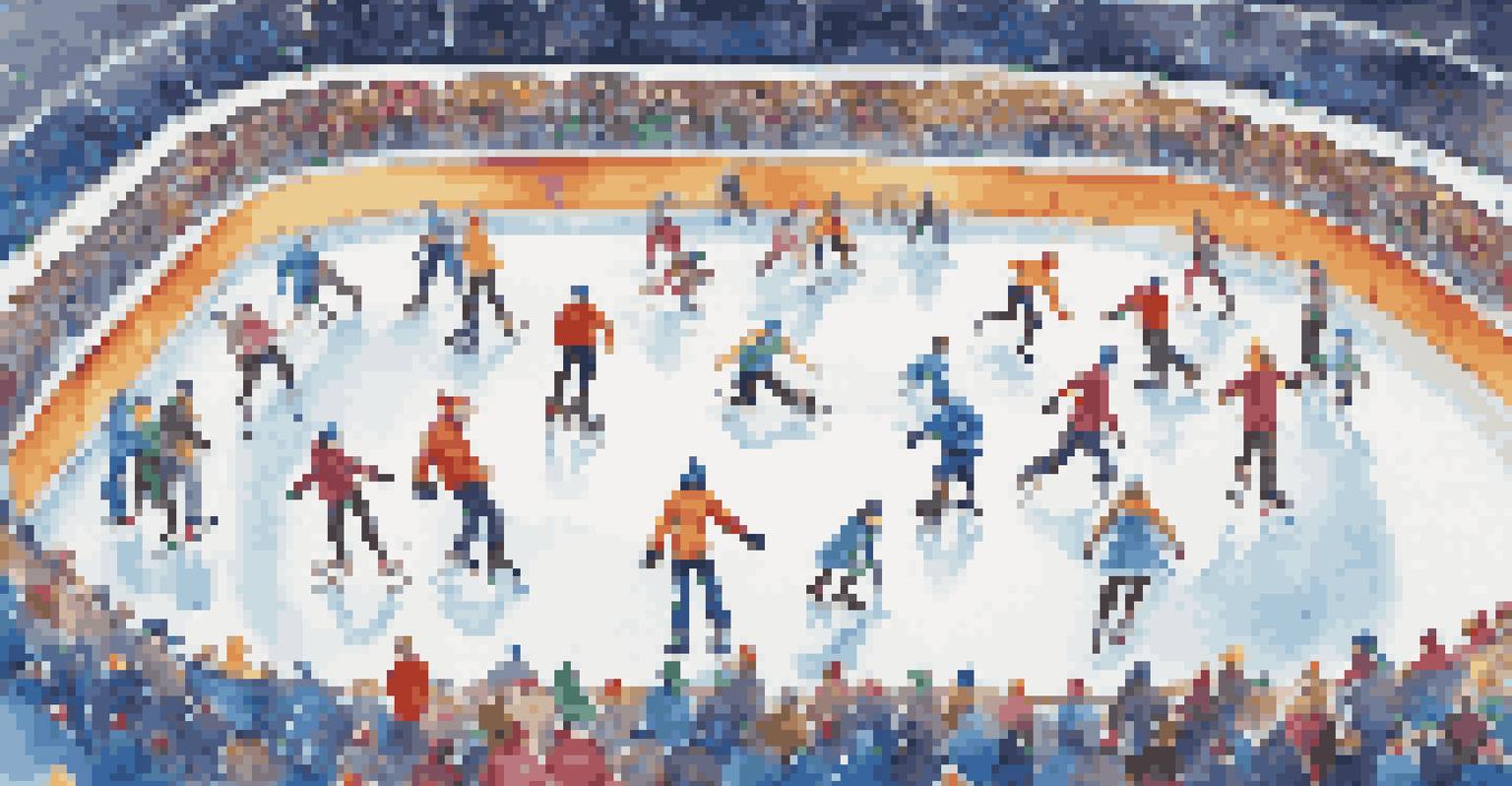Ice Skating Photography: Capturing the Perfect Moment

Understanding the Unique Challenges of Ice Skating Photography
Ice skating photography presents unique challenges that can trip up even experienced photographers. The fast-paced movement of skaters, combined with the reflective surfaces of the ice, makes it crucial to understand how to adapt your settings. You'll need to think about how to freeze those dynamic moments without losing the beauty of the sport.
Photography is the story I fail to put into words.
One of the main challenges is the lighting. Ice rinks often have harsh overhead lights that can create glare and shadows, affecting the quality of your shots. Familiarizing yourself with the rink's lighting conditions can help you anticipate and adjust your camera settings accordingly.
Additionally, capturing the emotion and artistry of skating involves more than just technical skills. It's about being in the right place at the right time, anticipating the skater's moves, and understanding their expressions. This awareness can significantly elevate the quality of your photographs.
Choosing the Right Equipment for Ice Skating Shots
To capture stunning ice skating photographs, having the right equipment is essential. A DSLR or mirrorless camera with a fast lens will help you capture sharp images in low light. Look for lenses with a wide aperture, such as f/2.8, to let in more light, which can be especially useful in rinks.

A telephoto lens is also beneficial, allowing you to zoom in on skaters from a distance without losing detail. This is particularly useful in competitions where you may not have the ability to get very close to the action. A lens with image stabilization can help mitigate any shakiness that occurs when shooting at slower shutter speeds.
Master Your Camera Settings
Setting a fast shutter speed and adjusting ISO are crucial for capturing sharp images of fast-moving skaters.
Lastly, consider using a camera with fast autofocus capabilities. This feature is crucial when dealing with fast-moving subjects, as it will help you keep your focus on the skater and capture those split-second moments of grace and intensity.
Setting Up Your Camera for Ice Skating Photography
When photographing ice skating, proper camera settings can make all the difference. Start by setting your camera to a fast shutter speed—at least 1/500th of a second—to freeze the action. This will help ensure that your images are crisp and clear, even when the skaters are moving at high speeds.
You don’t take a photograph, you make it.
Next, adjust your ISO settings to accommodate the rink's lighting conditions. While a lower ISO typically results in clearer images, it might be necessary to increase it to prevent motion blur. Be cautious, though—higher ISO settings can introduce noise, which may detract from the overall quality of your photos.
Lastly, consider using continuous shooting mode. This feature allows you to take several shots in quick succession, increasing your chances of capturing that perfect moment. With skaters often performing multiple spins and jumps, this setting can be a game-changer in your photography toolkit.
Finding the Best Angles and Perspectives
Finding the right angle is key to capturing the essence of ice skating. Experiment with shooting from different perspectives—try low angles to emphasize the height of a jump or a dramatic spin. This approach can add depth and excitement to your photos, making them more compelling and dynamic.
Don't hesitate to move around the rink and change your position as the skaters perform. Each spot will provide a unique viewpoint and can result in different compositions. Sometimes, a simple shift to the left or right can transform a mundane shot into something extraordinary.
Choose the Right Equipment
Using a DSLR or mirrorless camera with a fast lens and telephoto options can significantly enhance your ice skating photography.
Additionally, consider incorporating the environment into your shots. Capture the audience, the rink's decorations, or even the skaters' reflections on the ice. These elements can tell a more comprehensive story about the event and enhance the overall impact of your photography.
Timing: Capturing the Perfect Moment
Timing is everything in ice skating photography. The best moments often happen in the blink of an eye, so being prepared and attentive is crucial. Watch for key moments like jumps, spins, and footwork, and be ready to press the shutter at just the right time.
Practice anticipating the skater's movements. Familiarize yourself with their routines and the types of elements they will perform to better predict when to capture those stunning moments. This skill comes with experience, so don’t be discouraged if it takes time to develop.
Utilizing burst mode can also enhance your timing. This feature allows you to take multiple shots in rapid succession, increasing your chances of snapping the perfect moment. Review your images afterward to see which shots truly stand out, and learn from the process for future competitions.
Post-Processing Techniques for Ice Skating Photos
Post-processing is an essential part of ice skating photography that can elevate your images. Using software like Adobe Lightroom or Photoshop, you can enhance colors, contrast, and sharpness, making your photos pop. Start by adjusting the exposure and white balance to ensure the colors reflect the atmosphere of the rink.
Consider cropping your images for better composition. Tightening the frame can draw attention to the skaters, eliminating distractions in the background. A well-composed photograph can tell a story and evoke emotion, making it more impactful for your audience.
Anticipate Key Moments
Being prepared and familiar with skater routines helps you capture the most dynamic and emotional moments during performances.
Lastly, don’t be afraid to experiment with filters and effects. Adding a subtle vignette can help focus the viewer’s attention on the skater, while boosting saturation can bring out the colors of their costumes. Just remember to keep edits natural and reflective of the scene to maintain authenticity.
Sharing Your Ice Skating Photography with the World
Once you've captured and edited your stunning ice skating photographs, it’s time to share them with the world. Social media platforms like Instagram and Facebook are excellent avenues to showcase your work and connect with fellow enthusiasts. Use relevant hashtags like #IceSkatingPhotography or #SkatingMoments to increase your visibility.
Consider creating a dedicated portfolio website to present your best work professionally. This can serve as a great tool for attracting potential clients or collaborators within the skating community. Including a blog on your site can also engage visitors and provide insights into your creative process.

Finally, don’t forget to network with local skating clubs or organizations. Sharing your photography with them could lead to opportunities for collaborations or invitations to events, allowing you to further hone your craft while gaining exposure in the skating world.